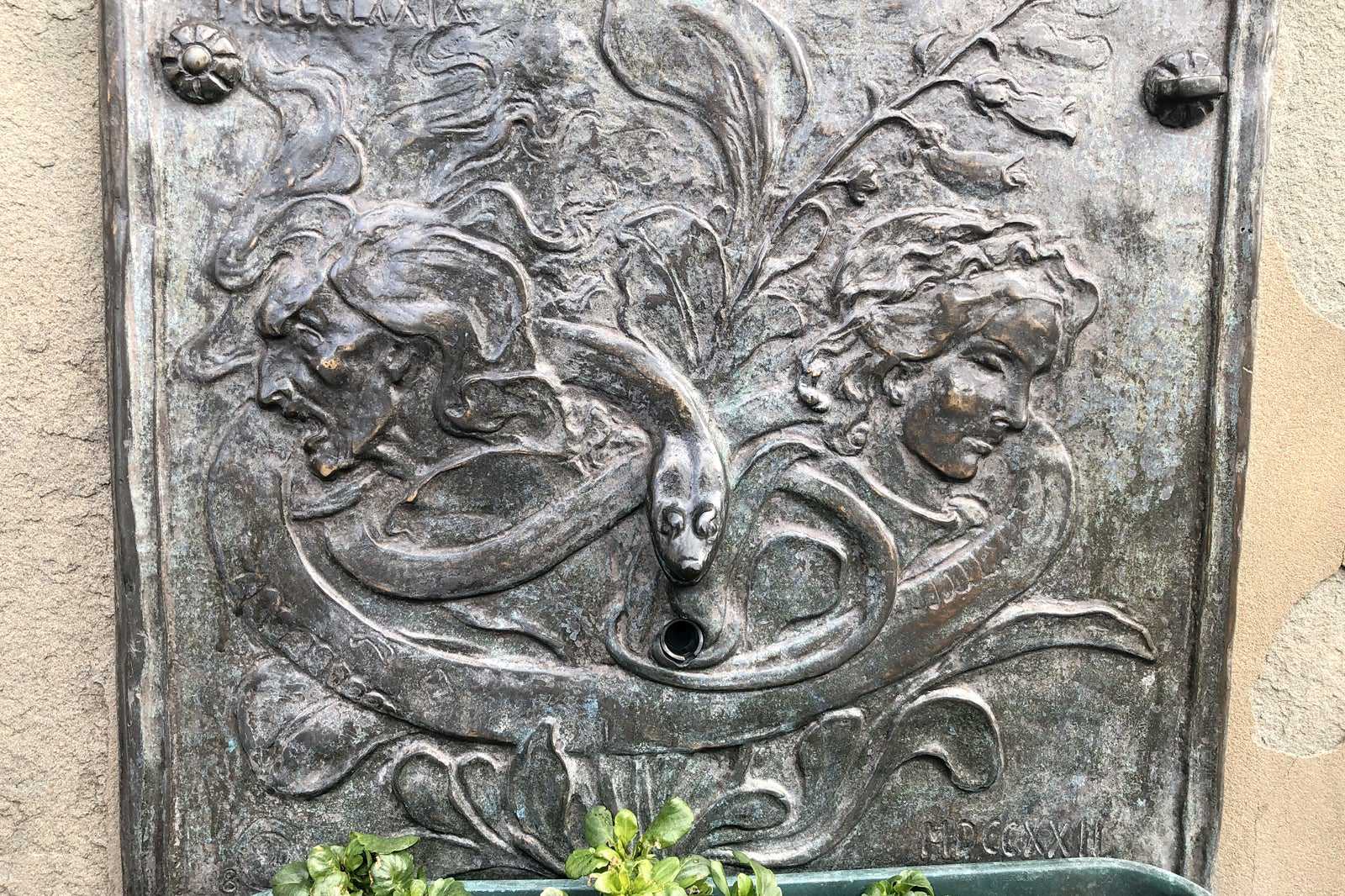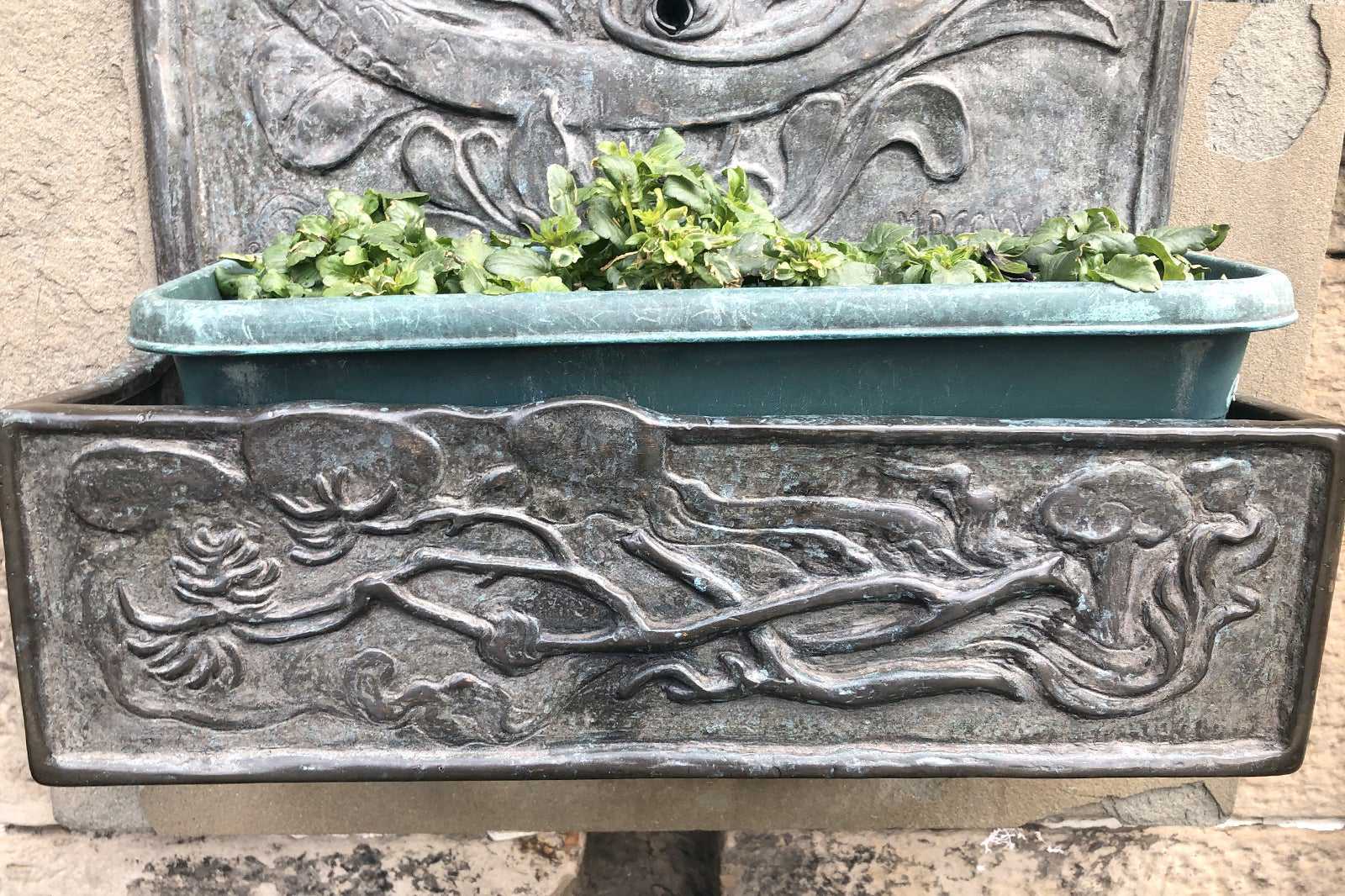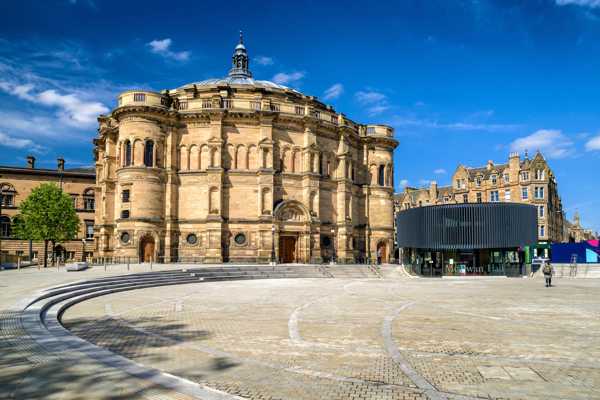The Witches’ Well is a monument to the women who were accused of being witches and burned at the stake during one of the darker chapters of Scotland's history. Historical records suggest that between the 15th and 18th centuries, thousands of women were executed at this very site by Edinburgh Castle without a proper trial, especially during the reign of King James VI.
The monument is relatively small, especially compared to the looming castle ahead, and its carvings are intricate and alluring. It was originally crafted as a water fountain, but it has since run dry. Now, you can visit the monument to pay your respects to the innocence lost in one of history's worst satanic panics while simultaneously appreciating the impressive craftsmanship that went into the design of The Witches’ Well that has impressed visitors for more than a century.

photo by Lila (CC BY-SA 4.0) modified
The Witches’ Well highlights
The primary highlight of The Witches’ Well is the intricate carving work. It depicts a bronze relief of a foxglove plant and a snake wrapped around Hygeia and Asclepius. Meanwhile, the sides of the monument feature different reliefs depicting foliage, healing hands and an evil eye. You'll also be able to find the Roman numerals for 1479 on one side and 1722 on the other, which were the years when witch persecution was most prominent.
One of the more interesting aspects of this monument is the accompanying plaque. Dating back to 1912, this plaque details the intent behind the carving clearly, describing how the snake is supposed to simultaneously represent evil and wisdom, while the foxglove spray represents the dual purpose of common objects. It's faced some criticism, however, as the phrasing seems to imply that the accused women had magical powers.

photo by Lila (CC BY-SA 4.0) modified
The Witches’ Well history
The Witches’ Well dates back to 1894 when it was first commissioned by Sir Patrick Geddes and designed by John Duncan. There have been calls to upgrade the monument with a newer, more permanent memorial. The Survey of Scottish Witchcraft even gave their support to the call in 2019.
Appreciating The Witches’ Well means understanding the history it's meant to honour. The witch trials, or rather witch executions in Scotland, led to thousands of women being hanged or burned at the stake for their supposed collusion with Satan. Of course, most of the women accused were simply herbalists or suffering from a mental illness, and some were simply the subject of an influential person's grudge.

photo by Lila (CC BY-SA 4.0) modified
Good to know when visiting The Witches’ Well
The first thing you need to know about The Witches’ Well is that it's fairly easy to miss. You'll find it on the way towards Edinburgh Castle, on the wall of the Tartan Weaving Mill. If you're heading towards the castle, you should pass the weaving mill. When you do, look to your right, and you should be able to see it tucked away on the side of the wall. The monument itself is directly facing the sign on the sidewalk that says 'Welcome to Edinburgh Castle'.
Given the location of the monument, you'll find yourself close to several other attractions as well. The Scottish National Gallery is just a short walk to the north up the Mound, while the National Museum of Scotland is just a few hundred feet in the opposite direction. Additionally, the scenic views of Calton Hill are less than 2 miles away.

photo by Lila (CC BY-SA 4.0) modified
The Witches’ Well in Edinburgh
Location: 555 Castlehill, Edinburgh, Scotland, UK


















